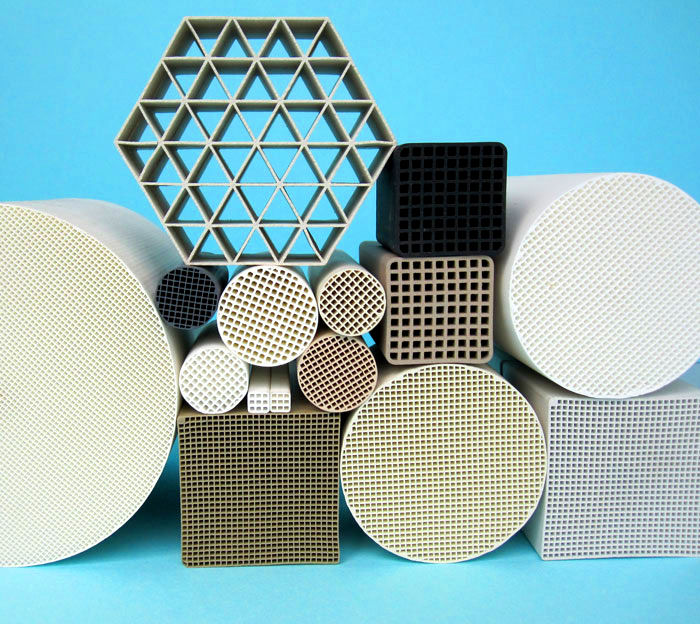The cellular structure of a honeycomb is modeled after nature – a solution that produces the largest possible surface with the smallest possible volume. For flow-related tasks, very thin walls keep the pressure loss very moderate while ensuring full contact of the gas molecules with the surface.
The surface characteristics can be varied along a very wide range by selecting specific ceramic materials. This makes honeycomb ceramics suited for filter applications, as catalyst carriers or as heat storage media.
The carrier structures for the catalytic purification of combustion gas from gasoline engines and for the filtration of soot particles from the exhaust flows of diesel engines consist of honeycomb ceramics. Furthermore, honeycomb ceramics are used for the treatment of industrial exhaust flows loaded with various organic and inorganic contaminants. Heat exchanger honeycombs are another example for honeycomb structure applications.
Product and services offered
We develop and manufacture honeycomb ceramics from siliceous materials (cordierite or mullite), oxide ceramics (aluminum oxide), perovskites or other oxide combinations, and from sintered metals with external dimensions of 6 to 94 mm, even to 160 mm for proof-of-principal tests, with cell densities of up to 325 cpsi (cells per square inch).
A selection of tool geometries and cell structures can be found within the detailed information. In addition to the standard geometries, represented by way of example, our collaboration with well-renowned tool manufacturers also enables the production of structures tailored specifically to the requirements of each individual application.
In this regard, our expertise covers the selection of materials suited for the respective operating conditions, the development of a tailored plastification system, the extrusion of honeycombs in different cell structures and outer contours as well as drying and sintering under oxidizing, reducing and inert atmospheres.
For development purposes, the production of specific external geometries by joining or mechanical treatment of existing structures is also possible with subsequent restoration of the outer layer. The know-how required for sealing the honeycombs as needed for filtration applications exists; it can be adapted according to the materials involved.
In order to optimize honeycomb structures under thermal or mechanical stress, FEM modules are used. We have the experience and the required equipment to determine the thermomechanical or mechanical parameters of the honeycomb structures. Furthermore, we have all that is needed to perform fault analyses at honeycomb cells through optical or acoustic methods. Simple testing devices can be built for the functional testing of filtration honeycombs. Also, we maintain collaborative relations with renowned test institutions. Catalytically activated honeycombs are tested in our in-house test lab.
